Sustaining a Culture of Excellence: Massive Open Online Course (MOOC) on Land Management
Abstract
:1. Introduction
- Interaction and collaboration—using social media and other interactive forms to stimulate independent learning and learning with peers.
- Open learning practice—free and open choice of topics and learning methods. Helps the student to create their own independent path and expertise.
- Game and simulation—build all learning elements on games and simulation. One can experience results of choices directly and learn from mistakes.
- Customized learning—instead of one size fits all, create individualized and personalized programs for each student.
- Self-study—no more teachers are necessary. All materials and formats are accessible to anyone anytime anywhere; certificates are generated automatically if a student fulfils all learning requirements.
2. What are the MOOCs in Land Management?
3. Introduction to Land Management (ILMx MOOC): Designing a Course
3.1. Motivation
3.2. Goals
3.3. Content Structure
3.4. Course Assessment
3.5. Development History
4. Emerging Patterns in ILMx MOOC: Demography, Geography, and Course Engagement
4.1. Demographic Patterns
4.2. Geographical Patterns
4.3. Patterns of Course Engagement
5. Reflections and the Way Forward: Sustaining a Culture of Excellence
5.1. Gender Disparity
5.2. Number of Participants (Low Retention Rates)
5.3. Global Distribution of Participants
5.4. Critical Reflection
- Videos are informative combined with text;
- Simplicity, brevity, and clarity of terms and key concepts on land management;
- Rich real-life examples provided by additional materials;
- quick overview and summary notes.
- The ambiguity of some answers in the drag and drop exercises;
- Different types of homework;
- English copy-editing;
- More diagrammatic representations;
- The incompleteness of hand-outs;
- Stimulating interactions among enrolled students and between the learners and instructors;
- Including more examples from Europe, North America, and the UK (examples are only focused on developing countries);
- Adding other types of videos (e.g., interviews with experts in the field, or portions of workshop discussions dealing with land management issues).
5.5. Learning by Doing: MOOCs in Land Management
6. Conclusions
Author Contributions
Funding
Acknowledgments
Conflicts of Interest
References
- Becker, S.A.; Brown, M.; Dahlstrom, E.; Davis, A.; DePaul, K.; Diaz, V.; Pomerantz, J. NMC Horizon Report: 2018 Higher Education Edition; Educause: Louisville, CO, USA, 2018. [Google Scholar]
- Agarwal, A. Online universities: It’s time for teachers to join the revolution. Guardian. 15 June 2013. Available online: http://theguardian.com/education/2013/jun/15/university-education-online-mooc (accessed on 15 April 2019).
- Kizilcec, R.F.; Saltarelli, A.J.; Reich, J.; Cohen, G.L. Closing global achievement gaps in MOOCs. Science 2017, 355, 251. [Google Scholar] [CrossRef] [PubMed]
- Robinson, A.C.; Nelson, J.K. Evaluating maps in a massive open online course. Cartogr. Perspect. 2015, 6–17. [Google Scholar] [CrossRef]
- McAuley, A.; Stewart, B.; Siemens, G.; Cormier, D. The MOOC Model for Digital Practice; University of Prince Edward Island: Charlottetown, PE, Canada, 2010. [Google Scholar]
- Joksimović, S.; Poquet, O.; Kovanović, V.; Dowell, N.; Mills, C.; Gašević, D.; Dawson, S.; Graesser, A.C.; Brooks, C. How Do We Model Learning at Scale? A Systematic Review of Research on MOOCs. Rev. Educ. Res. 2017, 88, 43–86. [Google Scholar] [CrossRef]
- ProLehre MOOCs An der TUM. Available online: http://www.prolehre.tum.de/en/angebote/lehrentwicklung/moocs-und-vhb/moocs-an-der-tum/ (accessed on 15 January 2019).
- Belgiu, M.; Strobl, J.; Wallentin, G. Open Geospatial Education. Isprs Int. J. Geo Inf. 2015, 4, 697. [Google Scholar] [CrossRef]
- FIG. Enhancing Surveying Education Through e-Learning; 46; FIG: Copenhagen, Denmark, 2010. [Google Scholar]
- Downes, S. Places to go: Connectivism & connective knowledge. Innov. J. Online Educ. 2008, 5, 6. [Google Scholar]
- Schopf, A.; de Vries, W.; Baume, M.; Dörfler, E.; Chigbu, U.E.; Antonio, D. E-Learning for Land Management: Experiences from two learning packages. In In Proceedings of the Land Governance in an Interconnected World—Annual World Bank Conference on Land And Poverty, Washington, DC, USA, 19–23 March 2018. [Google Scholar]
- Chigbu, E.U.; Schopf, A.; de Vries, W.T.; Masum, F.; Mabikke, S.; Antonio, D.; Espinoza, J. Combining land-use planning and tenure security: A tenure responsive land-use planning approach for developing countries AU—Chigbu, Uchendu Eugene. J. Environ. Plan. Manag. 2017, 60, 1622–1639. [Google Scholar] [CrossRef]
- Chigbu, E.U.; Leitmeier, A.; Masum, F.; Baume, M.; Antonio, D.; Mabikke, S.; Espinoza, J.; Hernig, A. Land Use Planning for Tenure Security: An E-Learning Tool for Developing Countries. In Proceedings of the World Bank Conference on Land and Poverty, Washington, DC, USA, 23–27 March 2015. [Google Scholar]
- Chigbu, E.U.; Masum, F.; Schopf, A.; Mabikke, S.; Antonio, D.; Espinoza, J.; Graefen, C. Tenure security responsible land use planning: Critical steps for actions in tackling urban poverty in developing countries. In Proceedings of the World Bank Conference on Land and Poverty, Washington, DC, USA, 14–18 March 2016. [Google Scholar]
- Koller, D. MOOCs can be a significant factor in opening doors to opportunity. EdSurge News [Internet]. 31 December 2013. Available online: https://www.edsurge.com/news/2013-12-31-daphne-koller-moocs-can-be-a-significant-factor-in-opening-doors-to-opportunity (accessed on 3 June 2019).
- Tawanna, R.D.; Brian Zengguang, W.; Stephanie, T. Democratizing higher education: Exploring MOOC use among those who cannot afford a formal education. Int. Rev. Res. Open Distrib. Learn. 2014, 15. [Google Scholar] [CrossRef]
- Jiang, S.; Schenke, K.; Eccles, J.S.; Xu, D.; Warschauer, M. Cross-national comparison of gender differences in the enrollment in and completion of science, technology, engineering, and mathematics Massive Open Online Courses. PloS ONE 2018, 13, e0202463. [Google Scholar] [CrossRef] [PubMed]
- Christensen, G.; Steinmetz, A.; Alcorn, B.; Bennett, A.; Woods, D.; Emanuel, E. The MOOC Phenomenon: Who Takes Massive Open Online Courses and Why? University of Pennsylvania: Philadelphia, PA, USA, 2013; p. 25. [Google Scholar]
- Hansen, J.D.; Reich, J. Democratizing education? Examining access and usage patterns in massive open online courses. Science 2015, 350, 1245. [Google Scholar] [CrossRef] [PubMed]
- Ho, A.; Chuang, I.; Reich, J.; Coleman, C.; Whitehill, J.; Northcutt, C.; Williams, J.; Hansen, J.; Lopez, G.; Petersen, R. HarvardX and MITx: Two Years of Open Online Courses Fall 2012-Summer 2014; Social Science Research Network: Rochester, NY, USA, 2015; Available online: https://ssrn.com/abstract=2586847 (accessed on 5 June 2019).
- Reich, J.; Ruipérez-Valiente, J.A. The MOOC pivot. Science 2019, 363, 130. [Google Scholar] [CrossRef] [PubMed]
- Khalil, H.; Ebner, M. MOOCs Completion Rates and Possible Methods to Improve Retention-A Literature Review; EdMedia+ Innovate Learning, 2014; Association for the Advancement of Computing in Education (AACE): Waynesville, NC, USA, 2014; pp. 1305–1313. [Google Scholar]
- Katy, J. Massive open online course completion rates revisited: Assessment, length and attrition. Int. Rev. Res. Open Distrib. Learn. 2015, 16. [Google Scholar] [CrossRef]
- Jordan, K. MOOC Completion Rates: The Data. 2013. Available online: http://www/. katyjordan. com/MOOCproject. html 2014 (accessed on 3 June 2019).
- Vitiello, M.; Walk, S.; Helic, D.; Chang, V.; Guetl, C. User behavioral patterns and early dropouts detection: Improved users profiling through analysis of successive offering of MOOC. J. Univers. Comput. Sci. 2018, 24, 1131–1150. [Google Scholar]
- Eaton, J.S. MOOCs and accreditation: Focus on the quality of “direct-to-students” education. Inside Accredit. 2012, 9, 10–12. [Google Scholar]
- Kocdar, S.; Aydin, C.H. Quality Assurance and Accreditation of MOOCs: Current Issues and Future Trends; Open Education Global: Newton, MA, USA, 2015. [Google Scholar]
- Leicht, A.; Heiss, J.; Byun, W.J. Issues and trends in Education for Sustainable Development; UNESCO Publishing: Paris, France, 2018; Volume 5. [Google Scholar]
- Pauw, J.; Gericke, N.; Olsson, D.; Berglund, T. The effectiveness of education for sustainable development. Sustainability 2015, 7, 15693–15717. [Google Scholar] [CrossRef]
- Rieckmann, M. Learning to transform the world: Key competencies in Education for Sustainable Development. In Issues and Trends in Education for Sustainable Development; UNESCO Publishing: Paris, France, 2018; Volume 39, pp. 39–59. [Google Scholar]
- Agbedahin, A.V. Sustainable development, Education for Sustainable Development, and the 2030 Agenda for Sustainable Development: Emergence, efficacy, eminence, and future. Sustain. Dev. 2019. [Google Scholar] [CrossRef]
- Brudermann, T.; Aschemann, R.; Füllsack, M.; Posch, A. Education for Sustainable Development 4.0: Lessons Learned from the University of Graz, Austria. Sustainability 2019, 11, 2347. [Google Scholar] [CrossRef]
- Oswald, K.; Gaventa, J.; Leach, M. Introduction: Interrogating Engaged Excellence in Research; IDS Bulletin: Brighton, UK, 2016; Volume 47, pp. 1–18. [Google Scholar]
- IDS. Engaged Excellence for Global Development, Strategy 2015–20; IDS: Brighton, UK, 2015. [Google Scholar]
- Luik, P.; Suviste, R.; Lepp, M.; Palts, T.; Tõnisson, E.; Säde, M.; Papli, K. What motivates enrolment in programming MOOCs? Br. J. Educ. Technol. 2019, 50, 153–165. [Google Scholar] [CrossRef]
- Bokor, J. University of the Future: A Thousand Year Old Industry on the Cusp of Profound Change; Ernst and Young Report; Ernst and Young: Sydney, Australia, 2012. [Google Scholar]
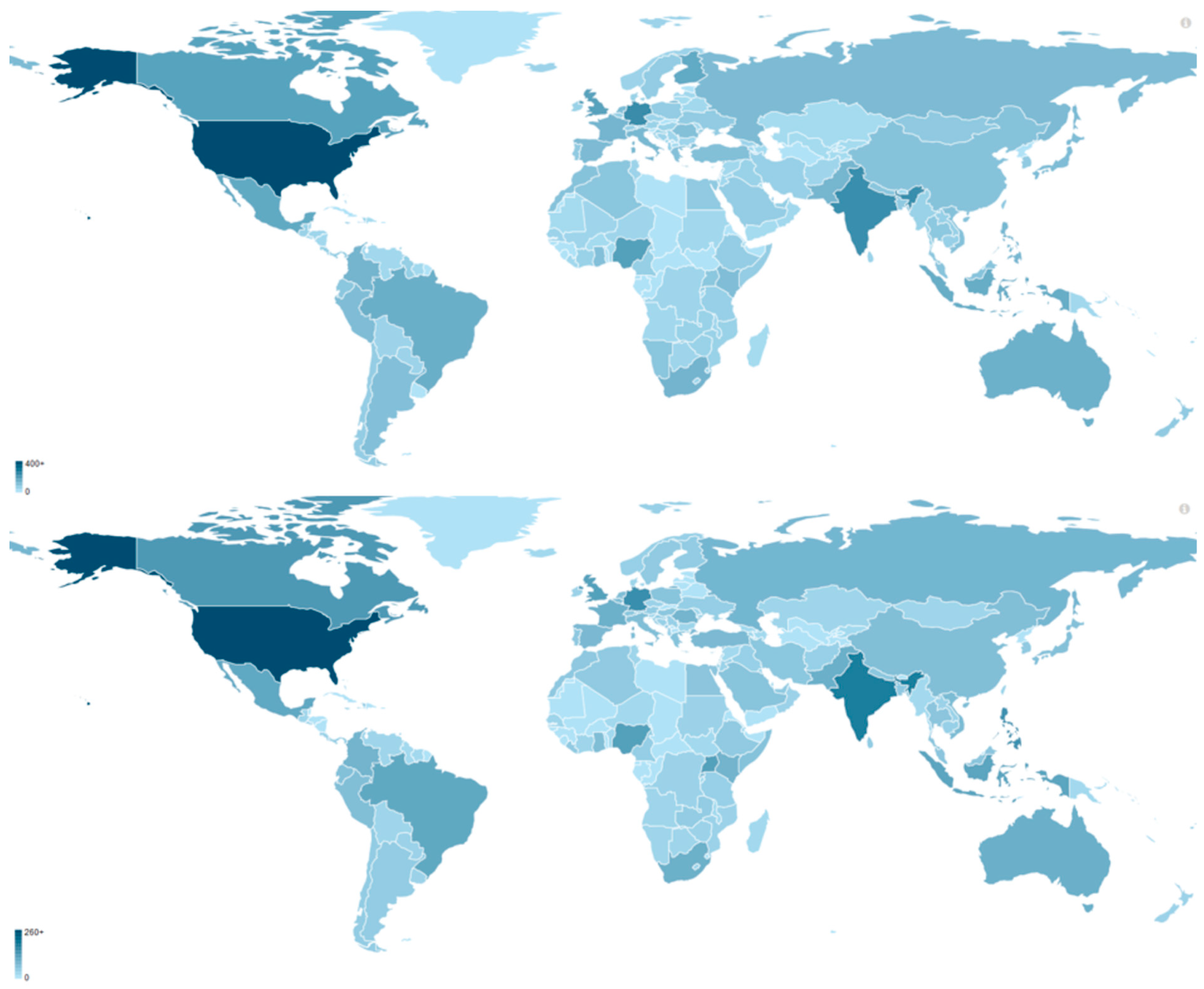
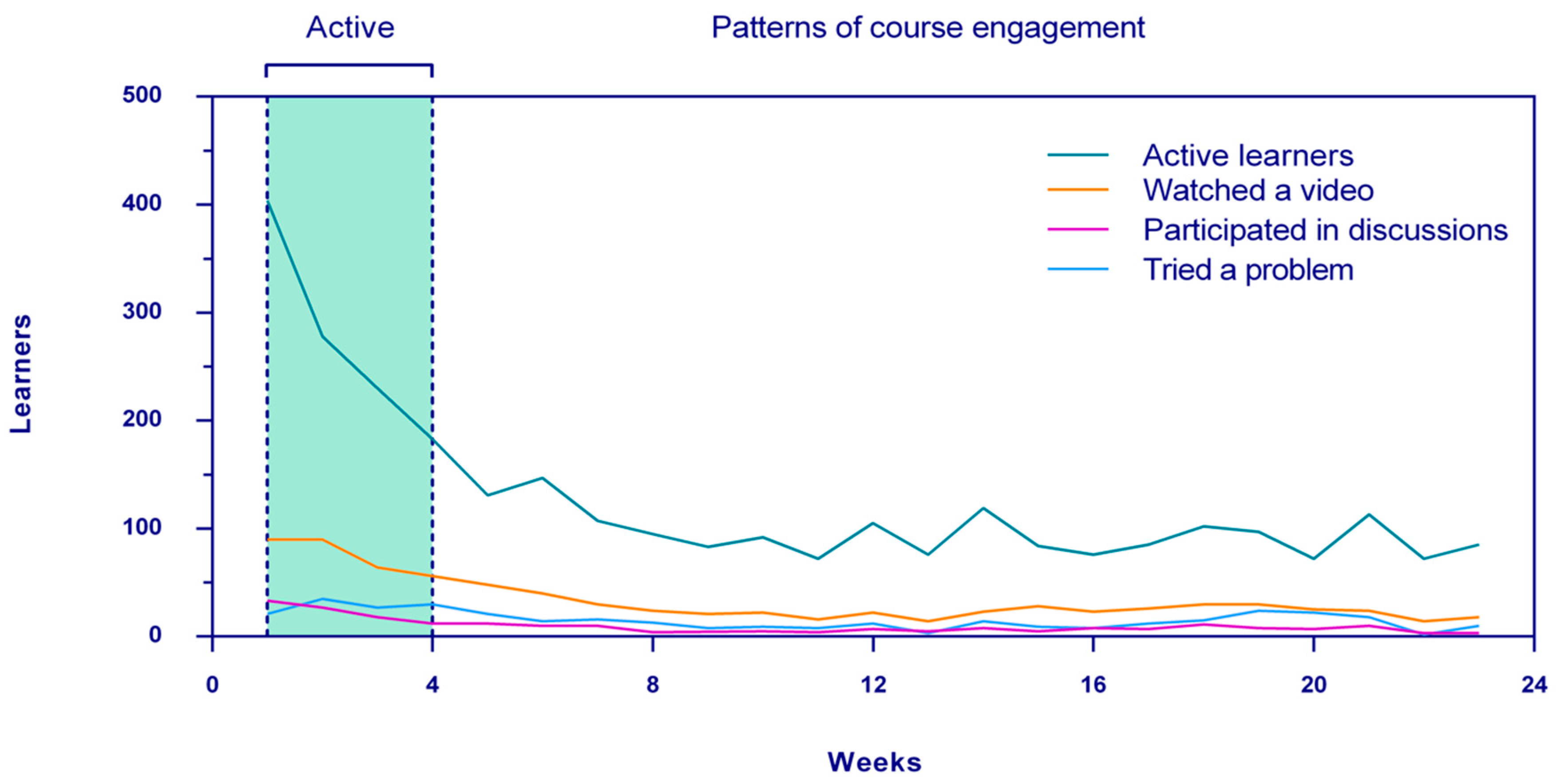
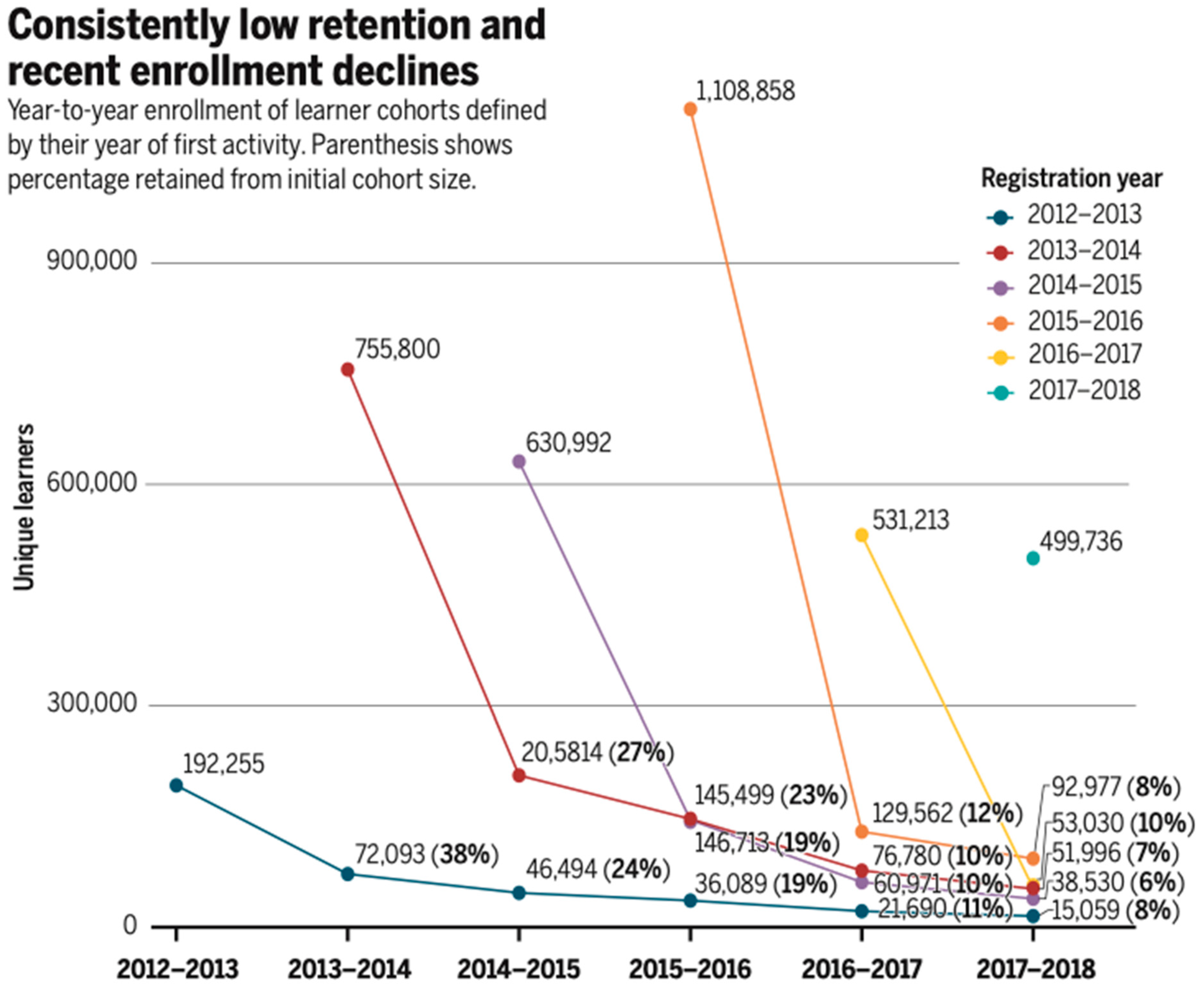
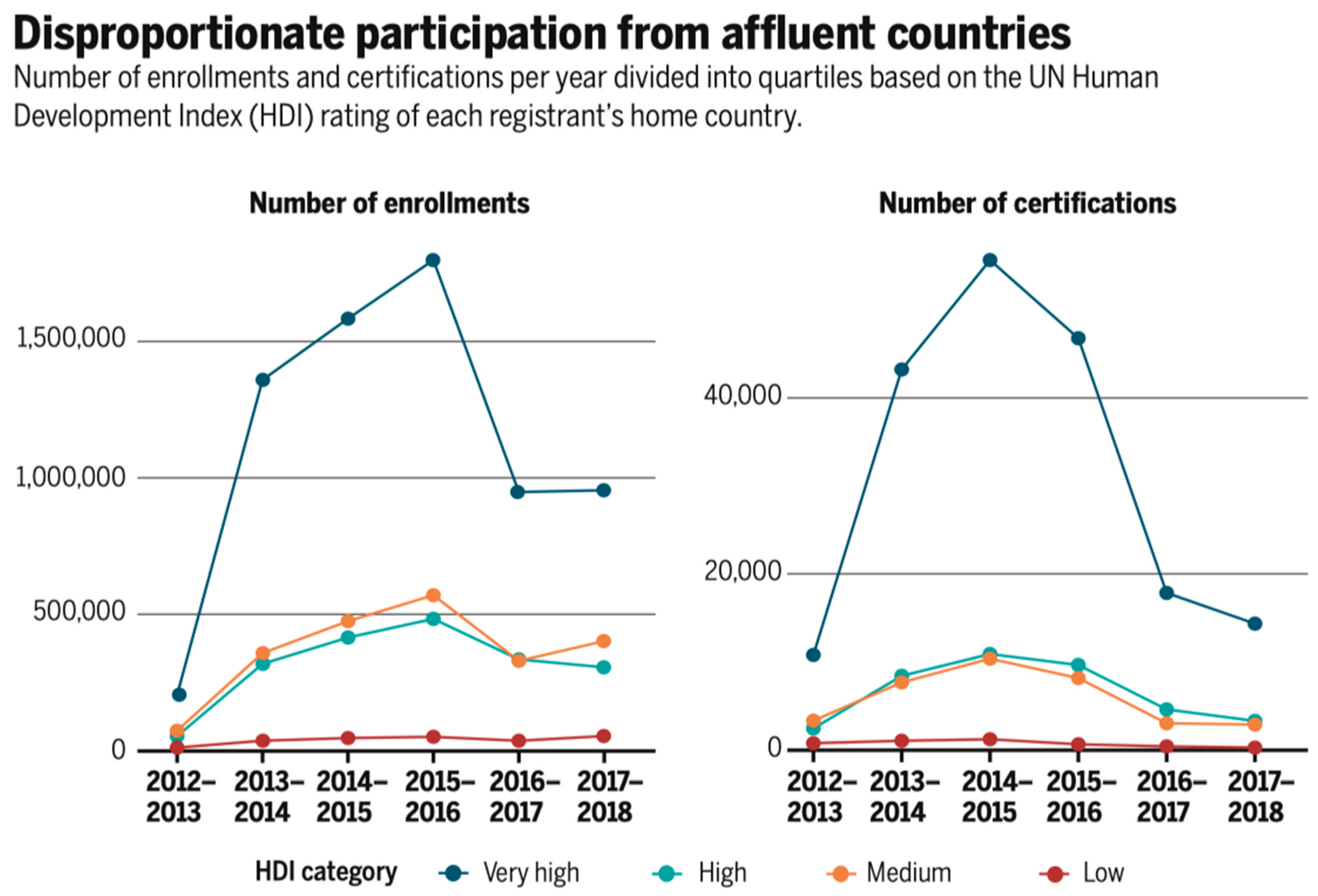
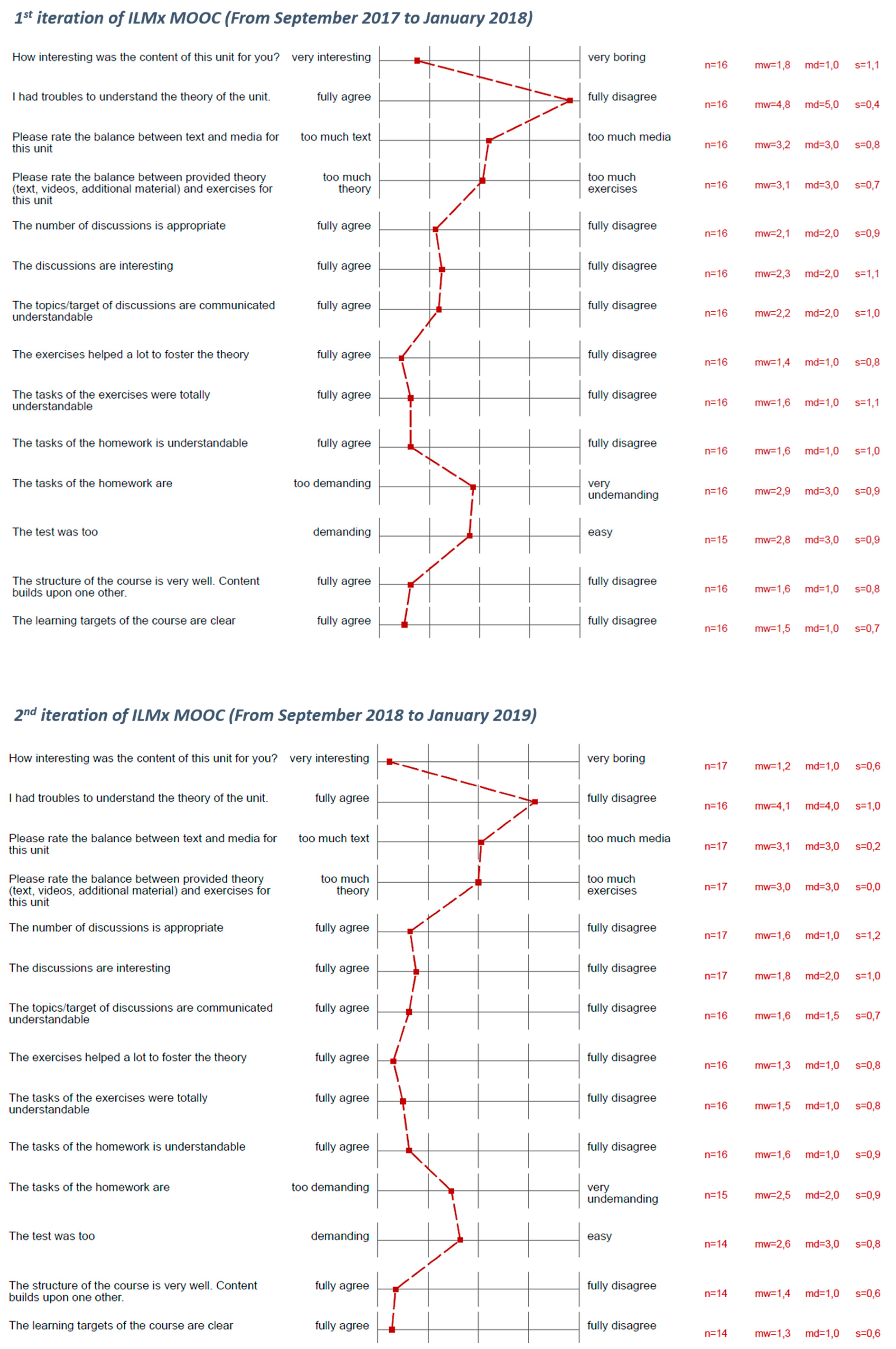
| Year | Time-to-Adoption of Technologies for Higher Education | ||
|---|---|---|---|
| 1 Year or Less | 2–3 Years | 4–5 Years | |
| 2009 |
|
|
|
| 2010 |
|
|
|
| 2011 |
|
|
|
| 2012 |
|
|
|
| 2013 |
|
|
|
| 2014 |
|
|
|
| 2015 |
|
|
|
| 2016 |
|
|
|
| 2017 |
|
|
|
| 2018 |
|
|
|
| Courses | Institutions | Platforms | Lengths (Weeks) | Costs | Levels | Subjects | Model |
|---|---|---|---|---|---|---|---|
| Entrepreneurial Land Redevelopment Approach: Land Readjustment | Massachusetts Institute of Technology, USA | edX | 5 | Free | Introductory | Engineering/Business and management | Self-paced |
| Environmental Challenges: Hierarchy in Property Rights | University of Leeds, UK | Future Learn | 2 | Free | Introductory to intermediate | Environmental science | Scheduled |
| Introduction to Land Management | Technical University of Munich, Germany | edX | 6 | Free | Introductory | Environmental science/Engineering | Self-paced |
| Introduction to Urban Geo-Informatics | Hong Kong Polytechnic University, Hong Kong | edX | 6 | Free | Introductory | GIS/Engineering | Self-paced |
| Landscape Governance: Collaborating Across Sectors and Scales | Wageningen University, Netherlands | edX | 4 | Free | Intermediate | Sustainability/social science | Self-paced |
| USAID Land Tenure and Property Rights | USAID, USA | Canvas network | 14 | Free | - | Humanities | Scheduled |
| TR-LUP Tool | ILMx MOOC | |
|---|---|---|
| User groups | Experts in land management or related disciplines | Beginners in land management or related disciplines |
| Objectives | To improve tenure security during a land use planning process | Introduction into the field of land management |
| Content structures | A text-based online tool with exercises, case studies and literature recommendations with five modules | A video-based online tool with exercises, discussion forum, case studies, and blogs and literature recommendations |
| Course models | Self-based learning or group training model | Self-based learning model |
| Platforms | Creyoco (a platform developed by TUM, Germany) | edX (a platform developed by Harvard University and MIT, USA) |
| Partners | GLTN (UN-Habitat), GIZ, and TUM | TUM |
| Releases | April 2018 | September 2017; September 2018 |
| 1st Iteration of ILMx MOOC | 2nd Iteration of ILMx MOOC | |
|---|---|---|
| Enrolment | 2791 | 2000 |
| Gender and age | ||
| Male | 60.4% | 64.9% |
| Female | 38.5% | 34.6% |
| Mean age | 31.0 years | 30.0 years |
| Country of residence | ||
| USA (16.4%) | USA (14.0%) | |
| India (5.6%) | India (6.4%) | |
| Germany (5.2%) | Germany (4.5%) | |
| Nigeria (3.3%) | Philippines (4.2%) | |
| United Kingdom (3.1%) | Canada (3.3%) | |
| Canada (3.0%) | Nigeria (2.9%) | |
| Mexico (2.4%) | Uganda (2.9%) | |
| Finland (2.4%) | United Kingdom (2.9%) | |
| Indonesia (2.2%) | Indonesia (2.5%) | |
| Brazil (2.0%) | Mexico (2.2%) | |
| Education | ||
| High school diploma or less | 16.3% | 16.7% |
| College degree | 44.0% | 46.2% |
| Advanced degree | 37.2% | 35.3% |
| Content Structure | Number of Videos | Average Complete Views | Average Incomplete Views | Completion Rates | ||||
|---|---|---|---|---|---|---|---|---|
| 1st run | 2nd run | 1st run | 2nd run | 1st run | 2nd run | 1st run | 2nd run | |
| Unit 1 | 7 | 7 | 319.0 | 158.1 | 80.6 | 37.3 | 79.8% | 80.9% |
| Unit 2 | 6 | 6 | 127.0 | 49.5 | 27.3 | 11.8 | 82.3% | 80.7% |
| Unit 3 | 3 | 3 | 95.7 | 41.0 | 15.3 | 7.7 | 86.2% | 84.2% |
| Unit 4 | 7 | 7 | 75.9 | 34.3 | 18.7 | 9.9 | 80.2% | 77.7% |
| Unit 5 | 5 | 5 | 63.4 | 31.2 | 16.0 | 4.8 | 79.8% | 86.7% |
| Unit 6 | 3 | 3 | 57.3 | 26.7 | 13.3 | 5.7 | 81.1% | 82.5% |
| Assignments | Number of Questions | Average Correct | Average Incorrect | Average Submissions | Percentage Correct | |||||
|---|---|---|---|---|---|---|---|---|---|---|
| 1st run | 2nd run | 1st run | 2nd run | 1st run | 2nd run | 1st run | 2nd run | 1st run | 2nd run | |
| Graded | ||||||||||
| Unit 1 | 6 | 5 | 37.0 | 11.2 | 7.7 | 4.6 | 44.7 | 15.8 | 82.8% | 70.9% |
| Unit 2 | 3 | 3 | 30.3 | 10.7 | 10.3 | 5.7 | 40.7 | 16.3 | 74.6% | 65.3% |
| Unit 3 | 1 | 1 | 30.0 | 13.0 | 8.0 | 3.0 | 38.0 | 16.0 | 78.9% | 81.3% |
| Unit 4 | 5 | 5 | 31.8 | 11.6 | 5.0 | 4.4 | 36.8 | 16.0 | 86.4% | 72.5% |
| Unit 5 | 3 | 3 | 30.0 | 10.3 | 6.3 | 4.7 | 36.3 | 15.0 | 82.6% | 68.9% |
| Unit 6 | 1 | 1 | 30.0 | 14.0 | 6.0 | 1.0 | 36.0 | 15.0 | 83.3% | 93.3% |
| Ungraded | ||||||||||
| Unit 1 | 14 | 16 | 180.2 | 93.8 | 19.3 | 15.1 | 199.5 | 108.9 | 90.3% | 86.1% |
| Unit 2 | 2 | 2 | 141.0 | 66.0 | 14.5 | 1.5 | 155.5 | 67.5 | 90.7% | 97.8% |
| Unit 3 | 1 | 1 | - | - | - | - | - | - | - | - |
| Unit 4 | 7 | 7 | 55.9 | 33.0 | 13.0 | 3.0 | 68.9 | 36.0 | 81.1% | 91.7% |
| Unit 5 | 3 | 3 | 63.3 | 34.0 | 7.7 | 0.7 | 71.0 | 34.7 | 89.2% | 98.1% |
| Unit 6 | 1 | 1 | 55.0 | 30.0 | 5.0 | 2.0 | 60.0 | 32.0 | 91.7% | 93.8% |
© 2019 by the authors. Licensee MDPI, Basel, Switzerland. This article is an open access article distributed under the terms and conditions of the Creative Commons Attribution (CC BY) license (http://creativecommons.org/licenses/by/4.0/).
Share and Cite
Lee, C.; de Vries, W.T. Sustaining a Culture of Excellence: Massive Open Online Course (MOOC) on Land Management. Sustainability 2019, 11, 3280. https://doi.org/10.3390/su11123280
Lee C, de Vries WT. Sustaining a Culture of Excellence: Massive Open Online Course (MOOC) on Land Management. Sustainability. 2019; 11(12):3280. https://doi.org/10.3390/su11123280
Chicago/Turabian StyleLee, Cheonjae, and Walter Timo de Vries. 2019. "Sustaining a Culture of Excellence: Massive Open Online Course (MOOC) on Land Management" Sustainability 11, no. 12: 3280. https://doi.org/10.3390/su11123280
APA StyleLee, C., & de Vries, W. T. (2019). Sustaining a Culture of Excellence: Massive Open Online Course (MOOC) on Land Management. Sustainability, 11(12), 3280. https://doi.org/10.3390/su11123280






